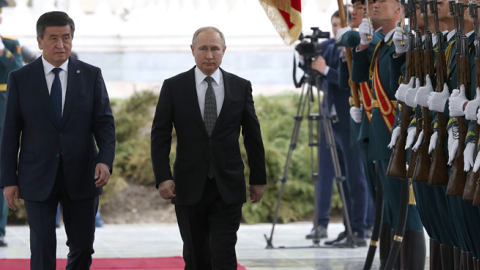A trip to the picturesque capital of this mountainous landlocked republic in Central Asia feels a bit like traveling through time. The brutalist architecture and the monumental scale of the avenues and city squares show just how deeply the Soviet Union left its imprint, and the scarcity of Western-style shopping malls and food chains shows how slowly the local economy has grown since the Soviet collapse.
Bishkek also offers a window into the future of Chinese power. The five countries in Central Asia—Kazakhstan, Tajikistan, Turkmenistan, Uzbekistan and Kyrgyzstan—stretch from the Tien Shan mountains to the Caspian Sea. They contain majestic mountains, fertile valleys and vast reserves of minerals, oil and gas. They are also central to China’s ambitious attempt to transform international trade so that land routes across Asia replace the sea routes between Europe and Asia.
Read the full article in the Wall Street Journal "here":https://www.wsj.com/articles/can-china-dislodge-russia-in-central-asia-…


















